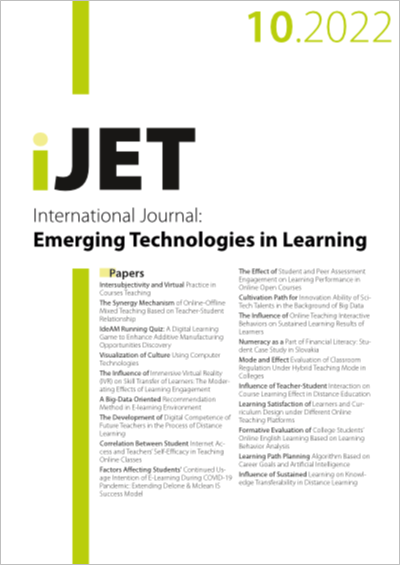Intersubjectivity and Virtual Practice in Courses Teaching
DOI:
https://doi.org/10.3991/ijet.v17i10.30915Keywords:
intersubjectivity, virtual practice teaching, courses teaching, subjective education, individuation, gesture recognitionAbstract
Based on the intersubjectivity during the teaching of teachers and the learning of students, this study explores the application of intersubjectivity and virtual practice teaching in courses teaching. By studying the current situation of intersubjectivity, virtual practice teaching, and teaching in courses teaching in China, this study designs the immersive virtual practice teaching stage from the perspective of practice according to the connotation of intersubjectivity and its application in courses teaching in colleges and universities. In the stage of immersive virtual practice teaching, by determining the beneficiaries of the course, designing the teaching objects, analyzing the teaching pain points, and designing and optimizing the teaching thinking, the HMM-FNN gesture recognition model was used to identify the gestures operated by the teachers and students in the process of immersive virtual practice teaching. The model further analyzed the advantages of virtual reality technology during the process of courses teaching in view of gesture recognition in the process of courses teaching. Empirical results show that this method can effectively prolong the students’ memory of courses teaching and greatly improve the interactive range of teaching resources. The lowest loss value of gesture recognition between the teachers and students is only 0.4, and virtual practice teaching has strong application. After application, the number of students who fail to pass the examinations dropped significantly, which can effectively improve the scores of students.
Downloads
Published
How to Cite
Issue
Section
License
Copyright (c) 2022 Jianhua Yang, Chen Jiang

This work is licensed under a Creative Commons Attribution 4.0 International License.



